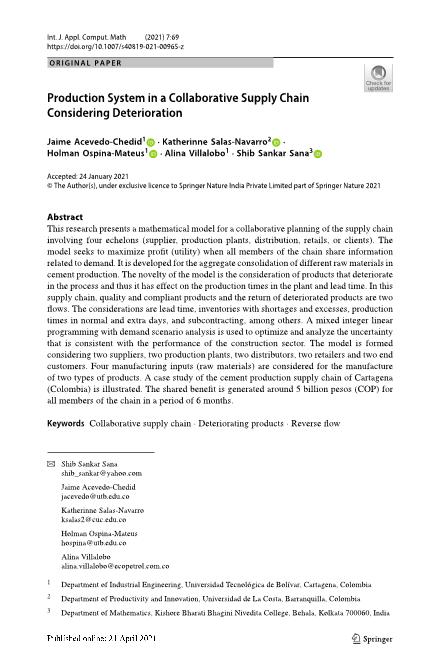Resumen
This research presents a mathematical model for a collaborative planning of the supply chain
involving four echelons (supplier, production plants, distribution, retails, or clients). The
model seeks to maximize profit (utility) when all members of the chain share information
related to demand. It is developed for the aggregate consolidation of different raw materials in
cement production. The novelty of the model is the consideration of products that deteriorate
in the process and thus it has effect on the production times in the plant and lead time. In this
supply chain, quality and compliant products and the return of deteriorated products are two
flows. The considerations are lead time, inventories with shortages and excesses, production
times in normal and extra days, and subcontracting, among others. A mixed integer linear
programming with demand scenario analysis is used to optimize and analyze the uncertainty
that is consistent with the performance of the construction sector. The model is formed
considering two suppliers, two production plants, two distributors, two retailers and two end
customers. Four manufacturing inputs (raw materials) are considered for the manufacture
of two types of products. A case study of the cement production supply chain of Cartagena
(Colombia) is illustrated. The shared benefit is generated around 5 billion pesos (COP) for
all members of the chain in a period of 6 months.














